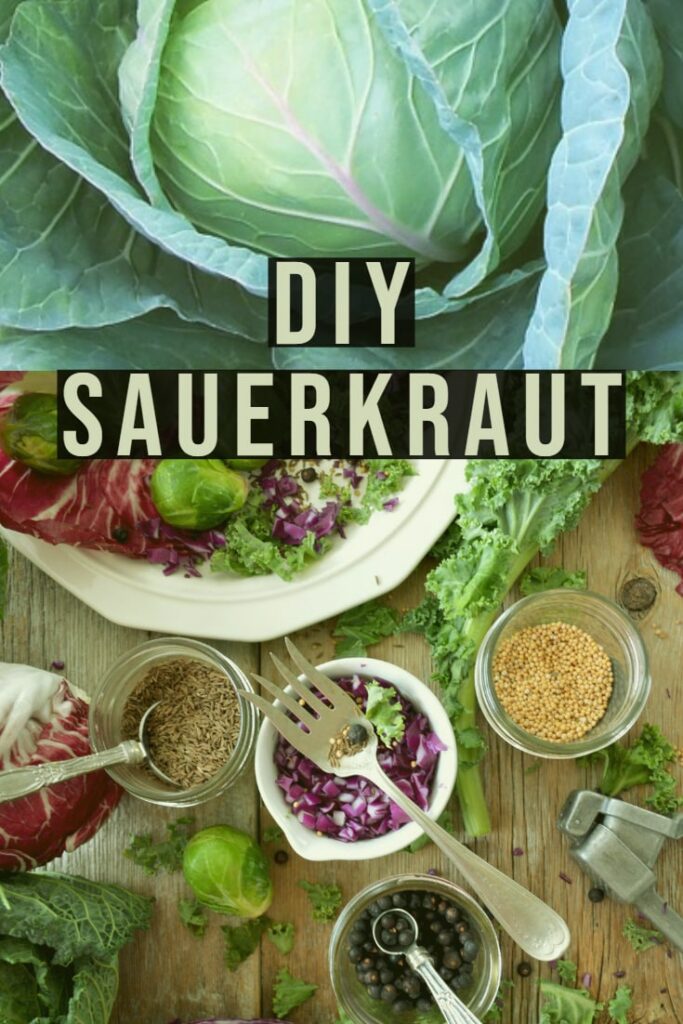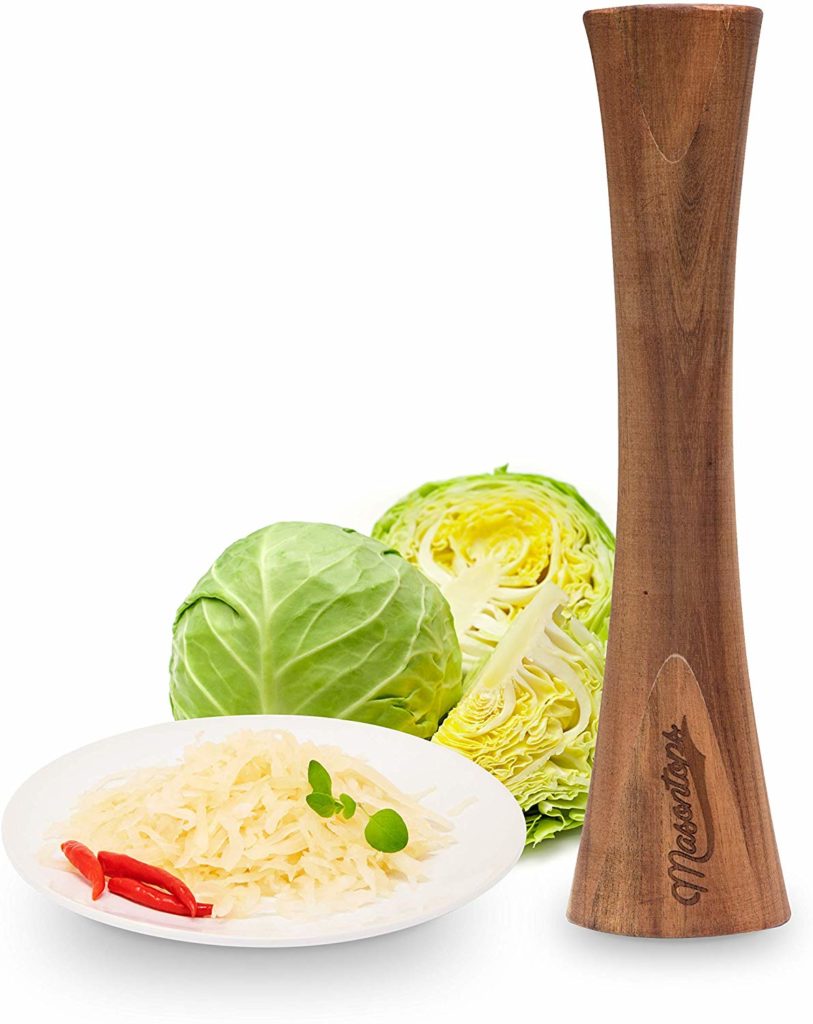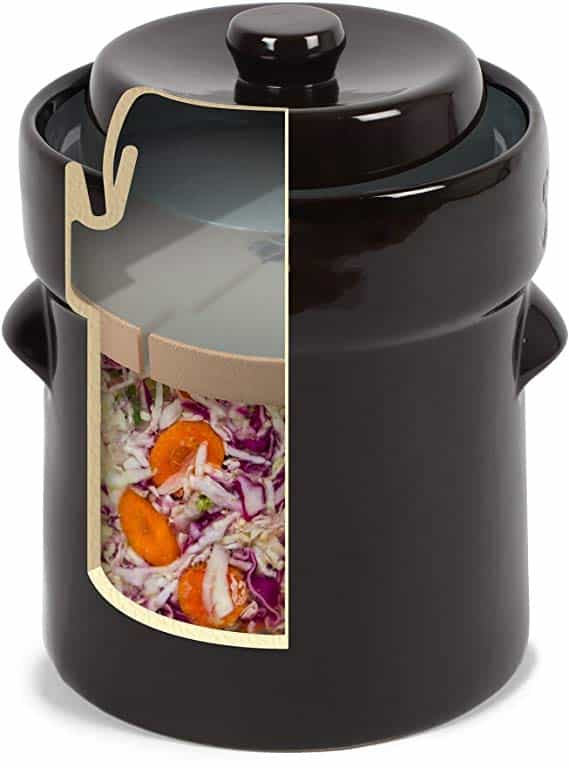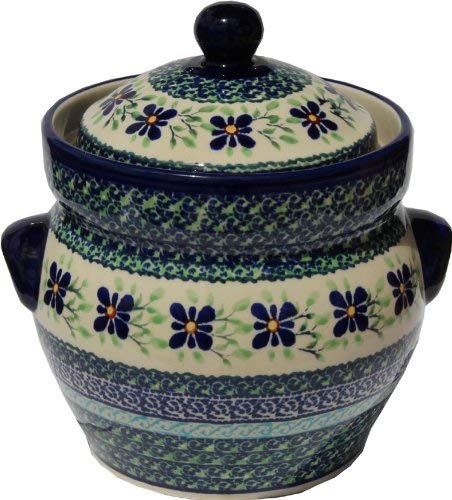There are many recipes out there for vegetarian Kimchi. However, I find these recipes very advanced. Most recipes also have ingredients that are hard to find at a local grocery store. I do make several versions of Kimchi, ranging from very simple, to very advanced.
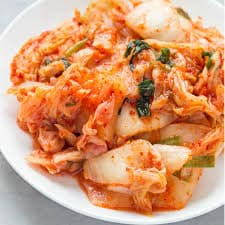
A helpful, simple, and yummy recipe, so you make Vegetarian Kimchi for yourself!
How could anything containing cabbage, radish, garlic, onion

How making your own probiotic foods are good for you.
The fermentation process works with lactobacilli. Probiotics are known to strengthen the immune system, decrease inflammation, as well as help the body keep a healthy digestive system. Kimchi is also known to for it’s antioxidant, antimutagenic, and anticarcinogenic benefits. Coupled with, vitamin C, B, Beta- carotene, calcium, potassium, iron and dietary fiber are also a part of what makes this dish a powerful health promoter.
Love cabbage and want to make your own sauerkraut, try this recipe.
Also, Kimchi, like most fermented foods, contains an odor that might take some getting used to. Uniquely, fermented cabbage certainly has a smell of its own.
Kimchi Recipe Ingredients
- 1 head napa cabbage, cut into 1/4 sections, slicing off the
bottom - 1/4 cup salt, divided
- 6 cloves garlic
- 1 (1 inch) piece fresh ginger root, peeled and chopped or grated
- 1 small white onion, peeled and chopped
- 3 green onions, minced
- cayenne pepper to taste
- a ripe persimmon or apple, chopped
- a small radish, shredded
- 1 cucumber, diced (optional)
Easy Vegetarian Kimchi Recipe
Making the delicious fermented dish Kimchi
- Rinse cabbage well. Place the cabbage in a large bowl. Pull cabbage slices apart without breaking up the cabbage too much, and sprinkle salt between layers. Use about 1/3 of the salt. Set aside for 15 minutes.
- After 15 minutes, lightly massage the cabbage, again, without breaking too many of the pieces apart. Add another 1/3 of your salt during the process. Set aside for 15 mins.
- Repeat the last step and use the rest of your salt. The goal here is to create a liquid in the bottom of the bowl. You are trying to produce enough liquid to cover the mixture AFTER you place it into a mason jar. If you do not have a substantial amount of liquid at this point, set aside for another 15 mins, and massage again, but no more salt.
- Repeat this process until you have a good amount of liquid at the bottom of the bowl. You should not have to add water.
- Combine the garlic, ginger, and onion in a blender with a little water (about 2 tablespoons). Blend on high speed until smooth.
- Stir together the rinsed drained cabbage, garlic-ginger mixture, minced green onions, cayenne pepper, persimmon, radish, and cucumber and mix well.
Pack the Jar with your Kimchi recipe
Now it’s time to pack the jar for your vegetarian kimchi. Grab a handful of kimchi and place into the jar. You can use a tamper, utensil or press it down with your hand. This is why it’s helpful to use a wide mouth jar. Keep adding handfuls of kimchi and pressing the air out by pressing the material down.
Pour any remaining brine into your jar. Leave a couple of inches from the top of the jar for expansion. If you need to, you can add more brine.
After you’ve packed all the sauerkraut in the jar you have to somehow keep all of your veggies under the brine. If the kimchi is subjected to oxygen, it will mold. There are many different ways to accomplish this.
Natures Way: Fold a large cabbage leaf so it fits the edges of your jar. Gently press it down under the brine, as much as possible.
The Cheap & Easy Plastic Way: Use a plastic sandwich bag, put some water in it and press it into your jar. Press all of the air out by pressing the bag to the sides. Add more water into the bag if necessary.
Cool Inventions Way: Glass fermentation weights are a creative and affordable way to keep your veggies out of the oxygen
Lid Options
You can use the matching jar lid. If you do this method there are two options. 1. Keep the lid on loosely so there is a way for the gases to escape. 2. You can put it on tightly and once or twice a day unscrew the lid to “burp” it.
Cheesecloth or other material. Use a rubber band to secure your material around the base of the jar.
You can also use these gorgeous fermenting crocks for your kimchi.
German Made Fermenting Crock
- Quality and safe keramik pot which is fired at 1260 c
- Pot comes with thick base and wall which makes it stable and durable
- Natural lactic acid fermentation is one of the oldest and healthiest means of food preservation
- The base is 0.6” (1.5cm) thick for strength and stability, the walls are approximately 0.4” thick
- Lead free glaze
Blue Cherry Blossom Porcelain Crock for Fermenting Kimchi
- Made of fine porcelain
- It has two lids
- It is for making and keeping pickles, not for cooking
- 100% lead free
Polish Pottery Fermenting Crock
- Dimensions: Height: 6″ (with no lid) Capacity: 7 cups
- Boleslawiec white clay molded and painted by hand
- Polish Pottery is oven- dishwasher- stove- and microwave oven safe, lead and cadmium free, resistant to chip
Medium Porcelain Fermenting Crock
- Made of fine porcelain hand painted
- It has two lids: one for cover, one for sealable to keep the best flavor, both can be water sealed.
- It is for making and keeping pickles, not for cooking
- Size: 10.5″H, 8″Dia Capacity: 3.5 Liter
How long does it take for Kimchi to ferment?
After a few days to about a week, your vegetarian kimchi will be ready. It is strictly your preference as to how long you want it to ferment.
I prefer around 4-5 days, but that will
Things that can affect your ferment are
Serve this vegetarian kimchi as a side dish or incorporate it into
Follow Permie Power Foods on Pinterest too.


